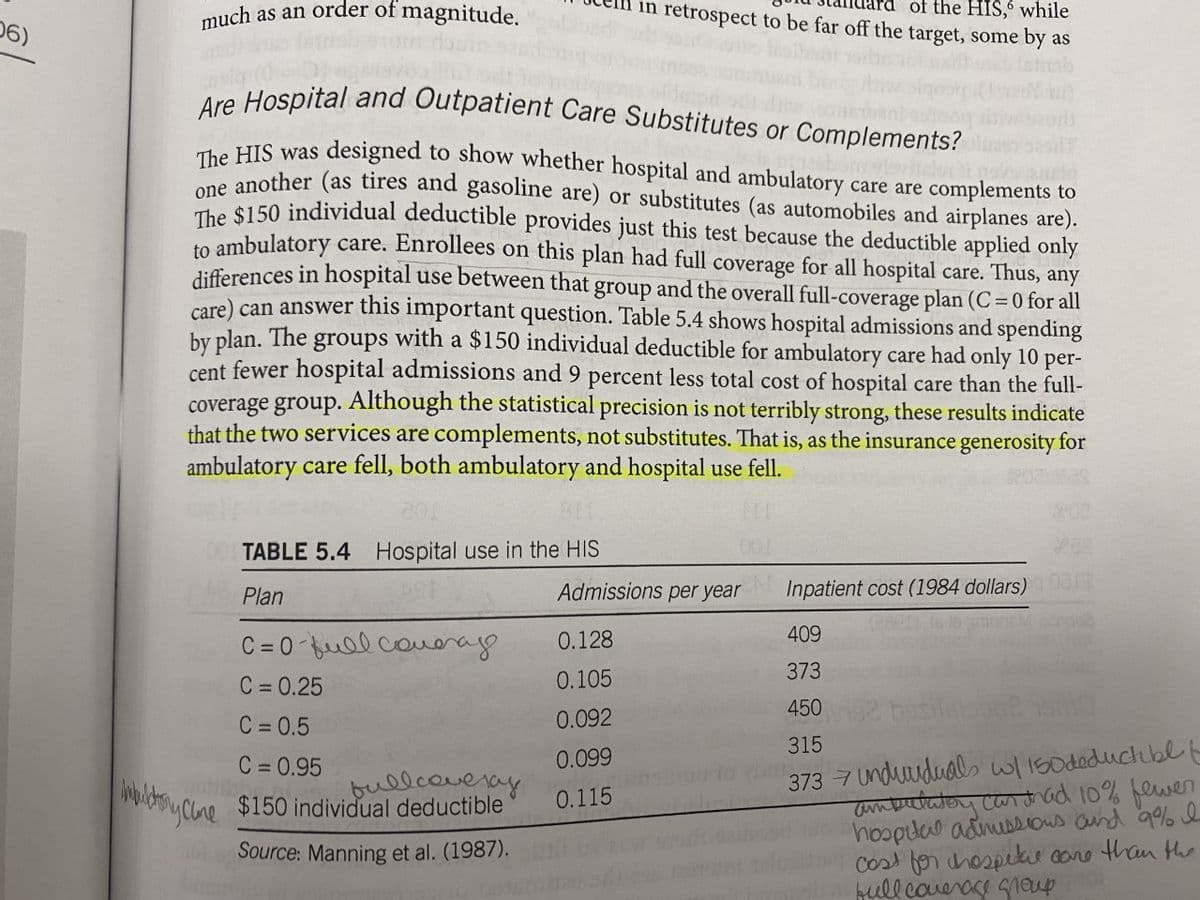Are Hospital and Outpatient Care Substitutes or Complements? gnitude. rospect to be far off the target, some by as nile much as al he HIS was designed to show whether hospital and ambulatory care are complements to e another (as tires and gasoline are) or substitutes (as automobiles and airplanes are). he $150 individual deductible provides just this test because the deductible applied only n ambulatory care. Enrollees on this plan had full coverage for all hospital care. Thus, any differences in hospital use between that group and the overall full-coverage plan (C=0 for all care) can answer this important question. Table 5.4 shows hospital admissions and spending by plan. The groups with a $150 individual deductible for ambulatory care had only 10 per- cent fewer hospital admissions and 9 percent less total cost of hospital care than the full- coverage group. Although the statistical precision is not terribly strong, these results indicate that the two services are complements, not substitutes. That is, as the insurance generosity for ambulatory care fell, both ambulatory and hospital use fell. TABLE 5.4 Hospital use in the HIS Admissions per year Inpatient cost (1984 dollars)SR Plan 409 C = 0 full couerago 0.128 373 C = 0.25 0.105 450 C = 0.5 0.092 373 7 Unduuduals w1sodeductubl mtey candrod 10% fewe hooplao admussiOus and 9% Cost fon chospeku cono tham 315 C = 0.95 0.099 bullcoveray. NC Cuno $150 individual deductible 0.115 Source: Manning et al. (1987).
In the RAND study, two plans had full coverage for spending within the hospital, but one had a $150 deductible for ambulatory care. The plan with the ambulatory care deductible had a lower probability of hospital admission (0.115) per year than did the plan with full coverage for everything (0.128), even though both plans covered hospital carefully. Based on the above, discuss the comparison between the use of hospital and ambulatory care and whether these two types of health care are substitute or complementary goods.

The RAND Corporation focused on determining whether inpatient and outpatient care are complementary or replacements. The need of knowing the difference between equivalent and alternative commodities or products is first and foremost. In economics, two products are said to be equivalent if using a larger amount of one of them necessitates using a larger amount of the other. In a similar vein, two items are said to be substitutes if using a larger amount of one product replaces the use of the other. Because of the previously indicated short-term and walking care, the two plans had a same cost for hospital treatment (zero), but one had a higher cost for short-term (non-hospital) care. The use of hospital treatment decreased as the cost of short-term care increased (in a similar course as short term care use headed). Similarly, when people "get into the framework" with better short-term inclusion, they are more likely to be hospitalized. As a result, the two governments act in lockstep, resulting in budgetary complementarity.
Trending now
This is a popular solution!
Step by step
Solved in 2 steps









